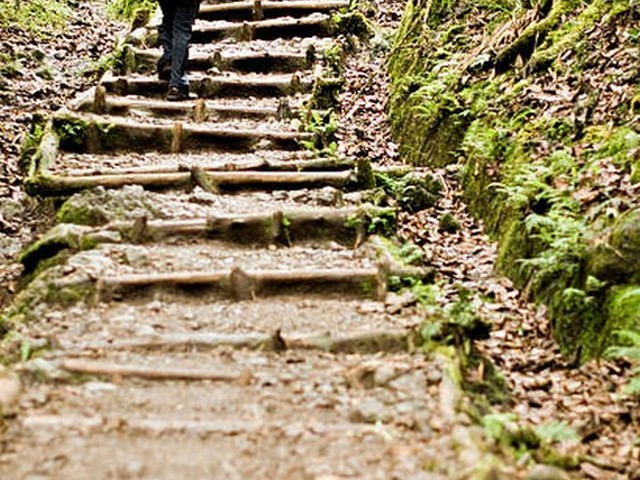Which Is The Best Kilimanjaro Trekking Route?
Rising majestically above the African plains, Mount Kilimanjaro isn’t just a mountain; it’s a monumental journey wrapped in awe-inspiring vistas, each step a story, and every breath a memory in the making. At Kilimanjaro Centre for Trekking and Ecotourism (KCTE), we don’t just guide expeditions; we create lifelong bonds with Africa’s highest peak. For those who dream of conquering its summit, the choice of route can make all the difference. In this comprehensive guide, we will explore the various paths that lead to the roof of Africa, helping you decide which is the best Kilimanjaro trekking route for your adventure of a lifetime.
Discovering Your Path to the Summit
1. The Marangu Route: The Classic Path
Often referred to as the "Coca-Cola" route, Marangu is famed for being the oldest and most established path on Kilimanjaro. Its main allure lies in its relative ease and the comfort of sleeping huts along the journey, complete with beds and solar-powered lights. It typically takes 5 to 6 days to complete, offering a gradual ascent that allows climbers to ease into the high altitudes. The Marangu route also features the beautiful Mandara and Kibo huts and offers an ascent and descent along the same path, providing familiarity and ease.
2. The Machame Route: The Whiskey Route
Contrasting its Coca-Cola counterpart, the Machame route is known affectionately as the "Whiskey" route, indicative of its tougher, more intoxicating challenge. This route is ideal for the adventurous soul, featuring steeper trails and longer distances. However, the extra exertion is rewarded with stunning scenery, from lush rainforests to the striking Shira Plateau. The Machame route typically spans 6 to 7 days and is preferred for its higher success rate, thanks to better acclimatization opportunities.
3. The Lemosho Route: The Scenic Beauty
If panorama is what you seek, Lemosho is your gateway to paradise. Commencing from the western side of Kilimanjaro, Lemosho traverses some of the most picturesque landscapes on the mountain, including the lush rainforests and the vast, beautiful Shira Plateau. Typically a 7 to 8-day trek, it merges with the Machame route at Shira Camp, combining its scenic beauty with the high success rates of the Machame trail.
4. The Rongai Route: The Remote Trail
For those who prefer solitude and serenity, the Rongai route is the road less traveled. Starting from the northeastern side of the mountain, this path is more remote and less frequented by climbers. It’s unique in that it offers a different perspective of Kilimanjaro, showcasing the quiet, unspoiled wilderness. This route takes about 6 to 7 days and boasts a high success rate due to its gentle gradient and steady ascent.
5. The Northern Circuit: The Longest Route
Dubbed the grand tour of Kilimanjaro, the Northern Circuit is the longest and most immersive route. Spanning 9 days, it circles the mountain, providing spellbinding views and an unrivaled summit experience. This route offers the best acclimatization profile, making the summit night an easier feat. For those who have the time, this journey offers the fullest Kilimanjaro experience.
6. The Umbwe Route: The Steep Challenge
For the seasoned climber looking for a thrill, the Umbwe route presents the steepest, most direct path to the summit. It is the least traveled and most challenging route on Kilimanjaro, recommended only for those with previous high-altitude, climbing, or trekking experience. This route converges with the Machame trail on day two and continues towards the summit with breathtaking and less crowded paths.
Choosing Your Route: Factors to Consider
Deciding on the best Kilimanjaro trekking route depends on several factors:
- Fitness Level: More challenging routes like Machame and Umbwe require good physical condition.
- Experience: First-timers might prefer routes with higher success rates and better acclimatization, like Lemosho or the Northern Circuit.
- Desired Scenery: Each route offers unique landscapes. Choose based on the natural environments you wish to experience.
- Duration: Consider how many days you can dedicate to this adventure. More days typically mean better acclimatization.
- Personal Preference: Some enjoy solitude, while others prefer the camaraderie of more popular paths.
Why Trek with Kilimanjaro Centre for Trekking and Ecotourism (KCTE)?
At KCTE, we are more than just a trekking company; we are your gateway to a transformative journey. Our expert guides, comprehensive preparation, and unwavering support ensure your journey to Uhuru Peak is memorable and safe. We specialize in creating tailor-made experiences that cater to your preferences, fitness levels, and dreams.
FAQ: Your Questions Answered
Q1: What is the best time of year to climb Kilimanjaro?
The best times are during the dry seasons, from June to October and from December to March.
Q2: How fit do I need to be to climb Kilimanjaro?
While you don’t need to be an athlete, a good level of fitness will significantly enhance your experience and success rate.
Q3: What should I pack for my Kilimanjaro trek?
Essential items include thermal layers, a good quality sleeping bag, hiking boots, a headlamp, and a water purification system.
Q4: How do I prevent altitude sickness?
Proper acclimatization is key, along with staying hydrated, eating well, and walking slowly.
Q5: Can I trek Kilimanjaro solo?
While solo treks are possible, joining a guided group with a reputable company like KCTE is highly recommended for safety and logistics.
Embark on Your Kilimanjaro Adventure
Choosing the best Kilimanjaro trekking route is just the beginning. Each path offers its own unique challenges and rewards, and with KCTE, you can be confident in a journey that is safe, enlightening, and utterly unforgettable. Ready to stand atop Africa? Contact Kilimanjaro Centre for Trekking and Ecotourism today, and let’s turn your mountain dreams into reality.




